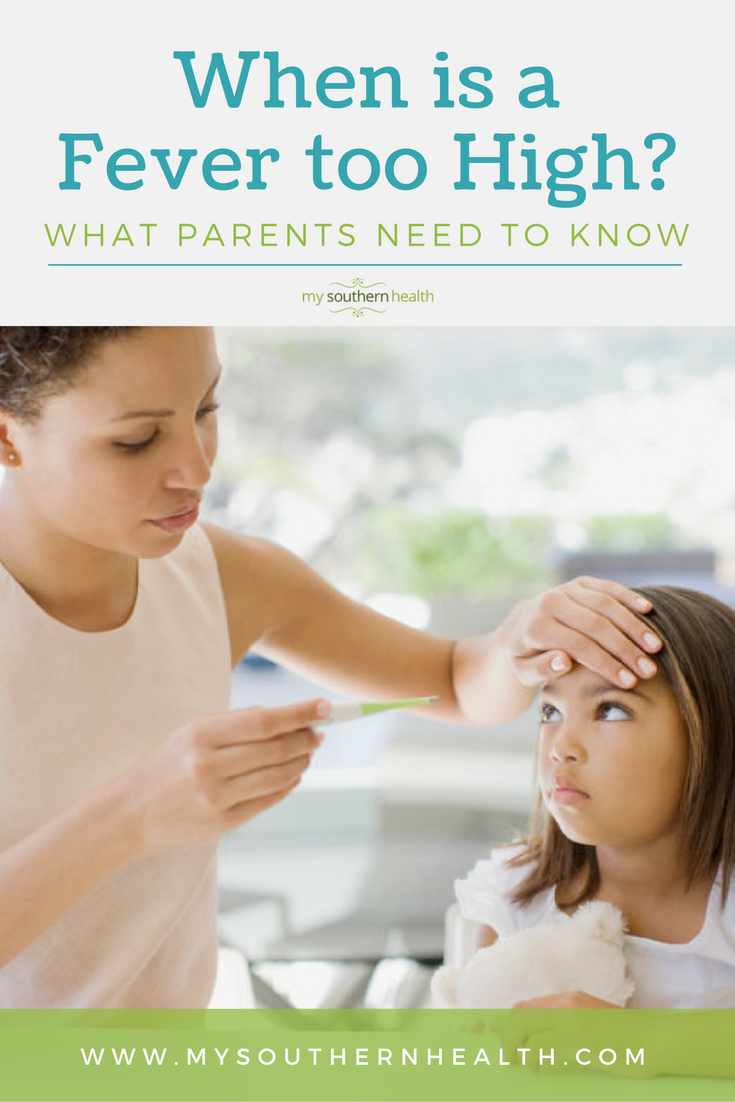Here’s what to know about your child’s fever.
It’s a common question parents ask pediatricians: “When is a fever too high?”
The first thing to know: Fevers are not dangerous. A fever, no matter how high, is not going to cause your child harm. Pediatricians pay attention to fevers because they signal when something is going on, usually an infection. But a fever itself is not dangerous.
A fever is defined as a temperature of 100.5 or greater. Fevers occur when a person’s immune system is activated, usually due to an infection. As part of the activation of the immune system, the body’s internal thermostat, which is in the brain, gets reset to a higher temperature, causing a fever. The fever may help the immune system fight off the infection. Because the body itself is resetting its internal thermostat, an otherwise healthy body will not reset its temperature to a level that is dangerous for itself. So really, a fever will never get too high. (It is important to note that this is different from rising body temperature due to heatstroke, which is caused by overheating from outside the body. This post does not address heatstroke).
It is not the temperature of the fever that is as important in determining how your child is doing, and whether your child should see a doctor, as other factors. Here are some times when a child with a fever should be seen:
- If fever occurs in infants younger than 6 months: We usually like to check them because they are more susceptible to infection.
- If your child is working hard to breathe: Signs that a child is working hard to breathe include rapid breathing, flaring nostrils, and the skin pulling in between the ribs, below the ribcage or above the collar bones when breathing. Take that child to see a doctor right away.
- If your child is dehydrated: Signs of dehydration include a dry mouth, decreased urine and decreased tears.
- If your child has had a fever for five days or longer: The child would need to be checked to see what might be behind the continued fever.
- If your child is not responding to you normally: He or she should be seen by a doctor.
But if your child with a fever is older than 6 months, has gotten all of his vaccines so far, is breathing OK, drinking OK, and is otherwise acting OK, well, then she is most likely OK.
Why and how to treat a fever
So if fevers aren’t dangerous, why do we treat them?
Children often feel better once their fevers go down. If your child has a fever but feels OK, you do not need to treat the fever. However, fevers often make children feel really yucky. Treating with acetaminophen (the active ingredient in Tylenol) or ibuprofen (the active ingredient in Motrin and Advil, for children 6 months and older) often will help them feel a lot better. If you have questions about the dose of acetaminophen or ibuprofen, check in with your pediatrician’s office for guidance.


Help after hours
Vanderbilt’s Children’s After-Hours Clinics offer the convenience of a walk-in clinic with care provided by a board-certified pediatrician from Children’s Hospital. No appointment is necessary, but we recommend calling your pediatrician first. Learn more about services and find locations for Children’s Hospital After Hours Clinic locations.
Is it the flu?
If you are worried that your child’s fever might be a symptom of the flu, check out our online flu tool to help you decide whether self care or a trip to the pediatrician or after-hours clinic is in order.

